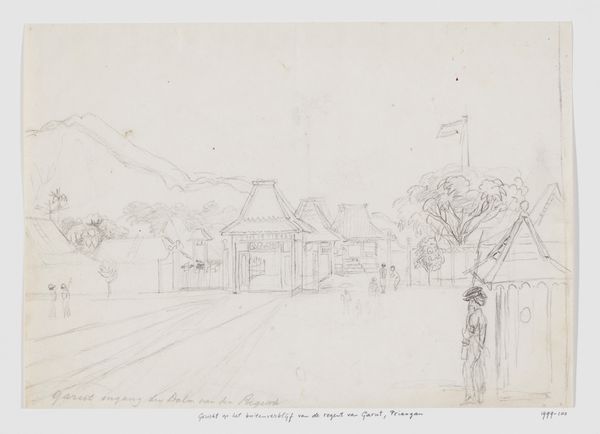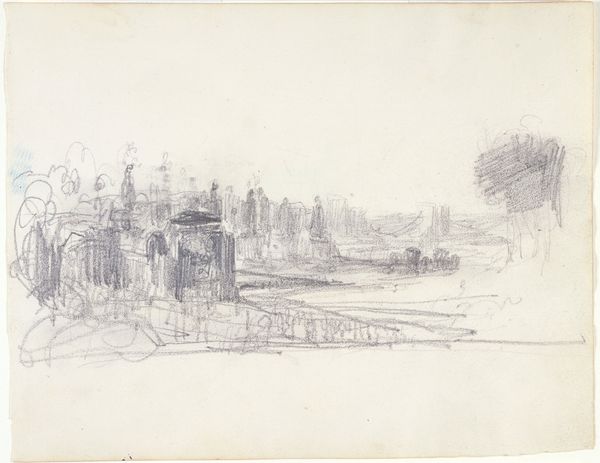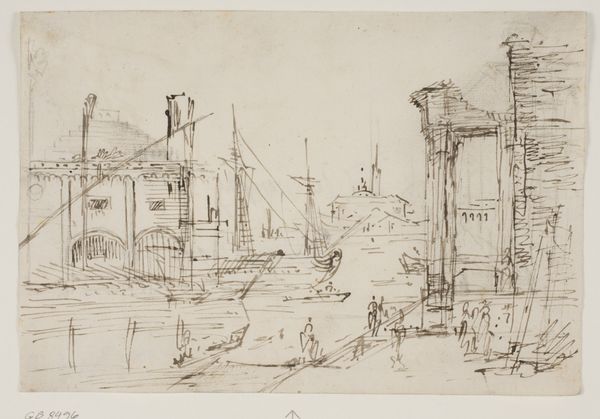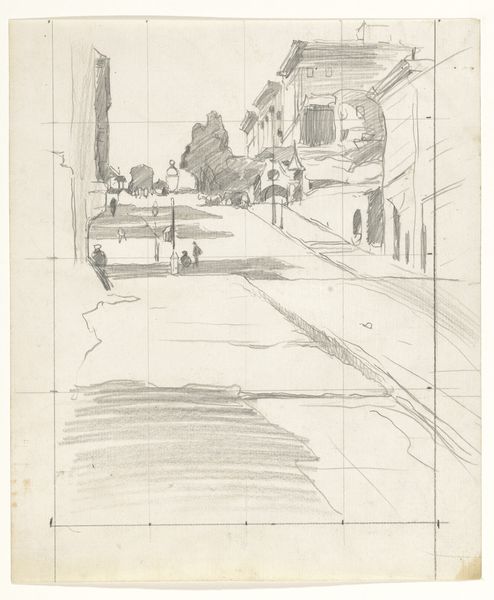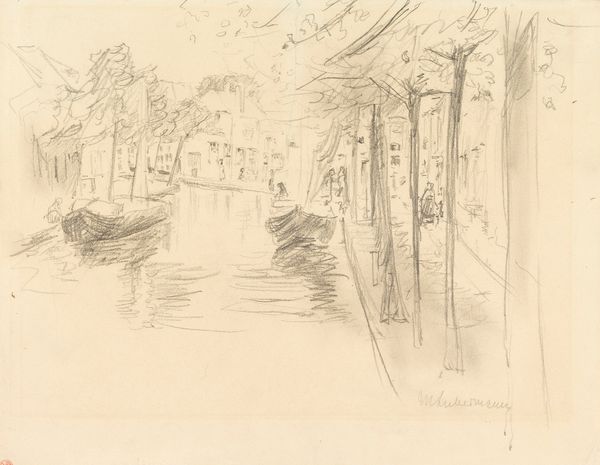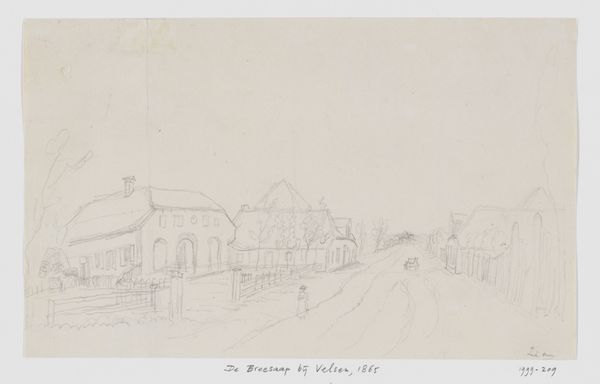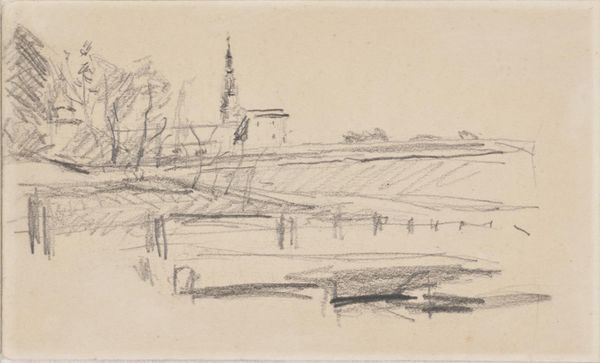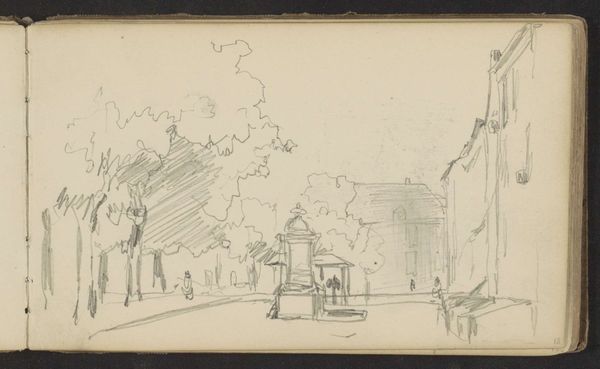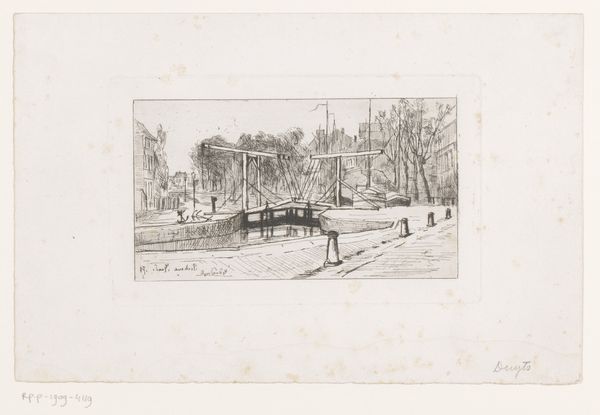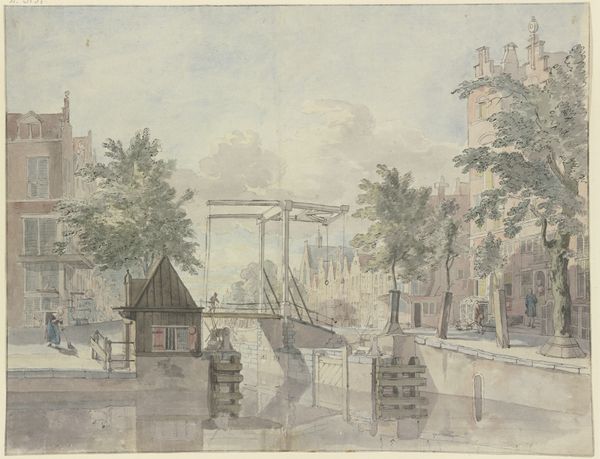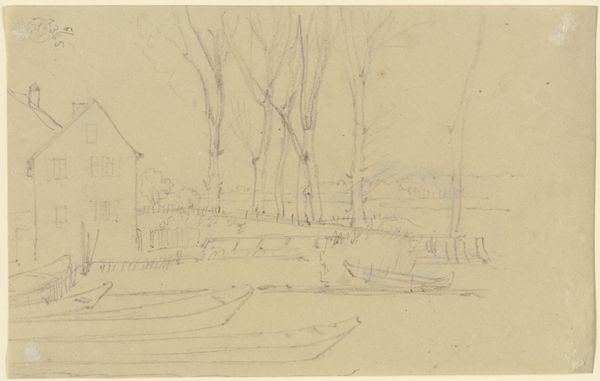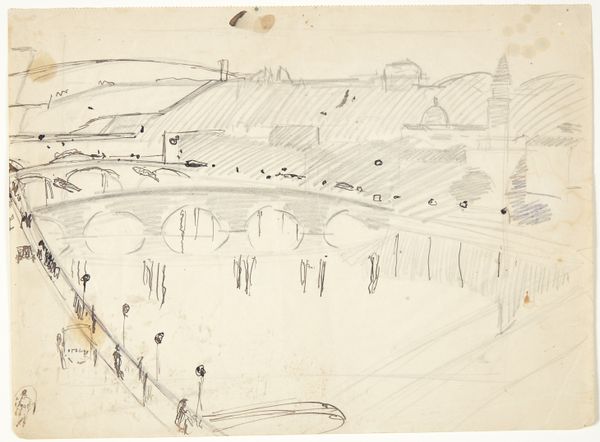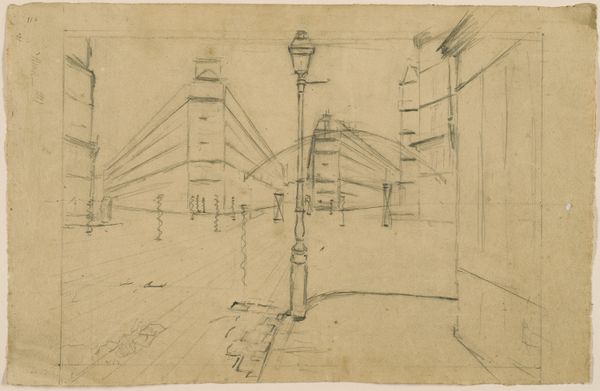
drawing, pencil
#
drawing
#
dutch-golden-age
#
pencil sketch
#
landscape
#
etching
#
sketch
#
pencil
#
cityscape
#
realism
Dimensions: height 198 mm, width 326 mm
Copyright: Rijks Museum: Open Domain
Editor: This is Adrianus Johannes Bik’s “View of the Rijswijk-Delft Road, South Holland,” a pencil sketch from around 1860-1870, currently held at the Rijksmuseum. It feels like a fleeting glimpse of everyday life, a kind of visual record. What stands out to you when you look at this drawing? Curator: Immediately, I am drawn to the windmill in the background. The windmill, culturally, embodies industry and progress, yes, but on another level, it’s so frequently used to represent the steadfast spirit of the Dutch people, a beacon of tradition against shifting landscapes. The road itself, with its carriages, invites questions of journeys and the human need for connection. Editor: That makes sense, the windmill definitely grounds the whole image in a specific time and place. What do you mean by human need for connection? Curator: Observe how the road narrows as it extends into the horizon, guiding the eye—and the viewer’s mind—deeper into the landscape. What does that suggest? It creates a sense of not just physical, but almost spiritual, movement toward something just beyond our grasp. The figures on the road, in their isolated carriages, seem to echo that desire to reach out, to find each other. Are they truly alone? Or are they sharing this silent journey together? Editor: It's amazing how much story can be conveyed through a simple pencil sketch. It is as if Bik is commenting on isolation and connection even with such minimal strokes. Curator: Exactly! And how even simple everyday symbols we frequently dismiss or see every day still have something profound to share with us. Perhaps he aimed to reveal the continuity of human experience through familiar scenes.
Comments
No comments
Be the first to comment and join the conversation on the ultimate creative platform.
